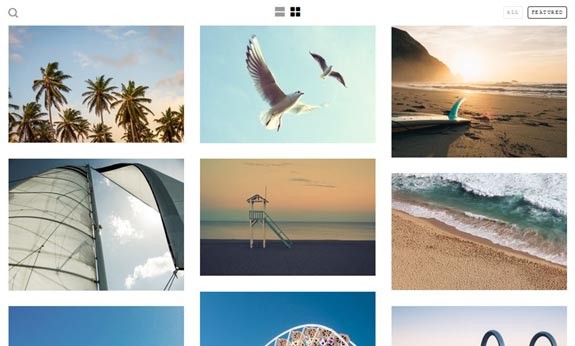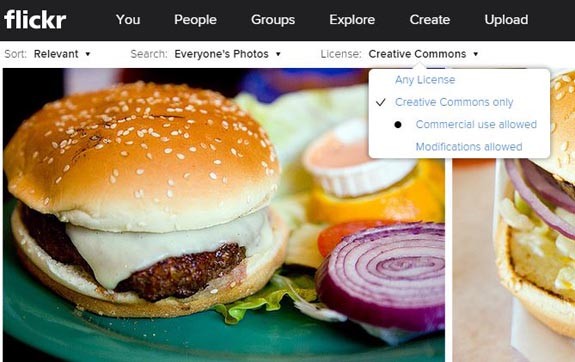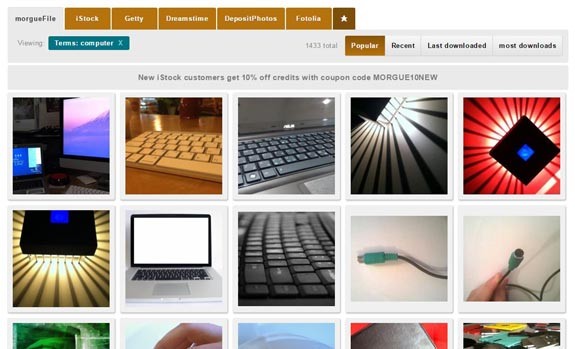It is said that a picture is worth a thousand words, but if you use the wrong image without the proper permissions, you could find yourself out several thousand dollars instead. When it comes to blogging, it can be positively crucial to accompany your words with a relevant image. This helps to break up the content and give your post more of a visual punch. The challenge, then, is finding the best sources for pictures to use with your blog. Here are several options to add to your arsenal.
Unsplash
Unsplash provides you with ten new photos every ten days and these images are completely free (and high resolution) to use however you see fit. These are really high quality pictures that can suit a variety of different posts. The problem is that they aren’t particularly well organized, so you will need to sift through the archive to find the picture you want to use.

Screenshots of Websites
While it’s likely not a good idea to use an image without the proper permissions and rights, you can take a screenshot of just about any website for editorial and illustrative purposes if you are talking about that specific website. It’s also important that the screenshot is clearly a screenshot and not a zoomed in portion of just the logo or some other image. A good example is the screenshot of Unsplash that I’ve included in this post above.
Picjumbo
Picjumbo boasts a huge collection of “totally free photos for your commercial & personal works.” These are organized into a number of different categories, like animals and architecture, or you can use the search box to find a specific kind of picture. While attribution is “greatly appreciated,” it is not required.
Flickr
Flickr may not seem as popular and relevant as it once was, but it is still a hugely valuable resource for getting free images to use in your blog posts. It’s important that you filter only for images that have an appropriate Creative Commons license (likely the one where you are allowed to use it for commercial purposes) and that you provide adequate attribution when you do. I use Flickr all the time for Beyond the Rhetoric blog posts.

Dreamstime
Dreamstime is a hybrid resource for stock photos and video footage. Like iStockPhoto and Fotolia, Dreamstime does offer paid stock photos where the cost is based on factors like size, usage and complexity. However, you can also filter for “royalty free” images to get the ones that don’t cost you a dime. You do need to sign up for a free account to get them, though.
Public Domain Archive
Public Domain Archive offers a catalog of high-resolution images that are, you guessed it, public domain. This means that they are 100% free stock photos that you can use in whatever fashion you’d like, including as part of your blog posts. There are new images uploaded every week and the optional premium package lets you bulk download all the images at once.
Morguefile
Morguefile is a free photo archive “by creatives for creatives.” The images provided here are completely free to use and you can search using the keywords of your choosing. They’re really high quality and, if you don’t find what you want, Morguefile also integrates with iStock, Getty, Dreamstime, DepositPhotos and Fotolia for more (paid) options.

Free Images
FreeImages.com is one of those websites that has way too descriptive of a domain name, don’t you think? As you can probably surmise, the site is a “leading source of free stock photos” with a gallery containing “over 350,000 quality stock photos by more than 30,000 photographers.” There are some rules regarding the image license, so check the Help section for that.
Your Own Photos
Original content is always the ideal. This is true for the articles that you write, just as much as it is true for the images that you use. If you have a great photo that you took yourself, of course you can utilize that image in your own blog post. This helps to add even more personality and uniqueness to your blog. When you don’t have an appropriate image, of course, there are lots of great free resources to use too!